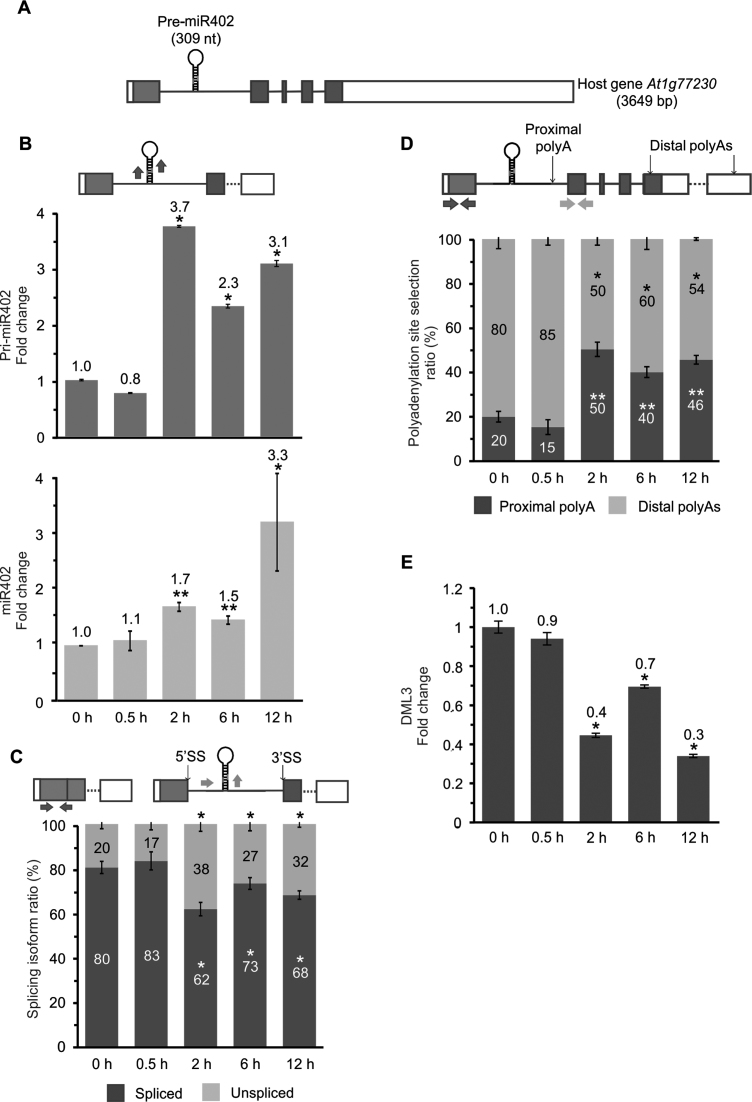Figure 1.
Heat-induced miR402 accumulation correlates with the inhibition of miRNA-carrying intron splicing and higher selection of proximal polyadenylation site. (A) Structure of At1g77230, hosting pre-miR402 within the first intron. Boxes represent exons (protein-coding sequence marked in gray, UTRs in white), and lines depict introns. RT-qPCR analysis of (B) the pri-miR402 (upper panel) and miR402 (lower panel) levels, (C) miR402-carrying intron splicing efficiency, (D) the proximal and distal polyA site usage and (E) DML3 expression levels in control and heat stress conditions. Arrows in the upper parts of the panels with the At1g77230 gene scheme depict the primers used (B–D). Error bars indicate SD (n = 3), and the asterisk indicates a significant difference between the sample and control (*P < 0.05; **P < 0.01; white stars—for spliced or proximal polyA isoforms; black stars—for unspliced and distal polyA isoforms (C-D)).

